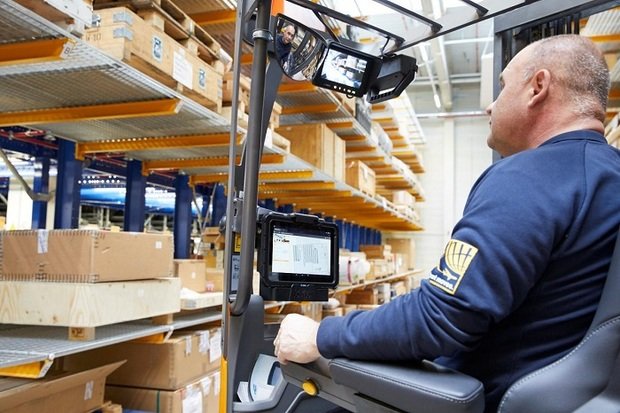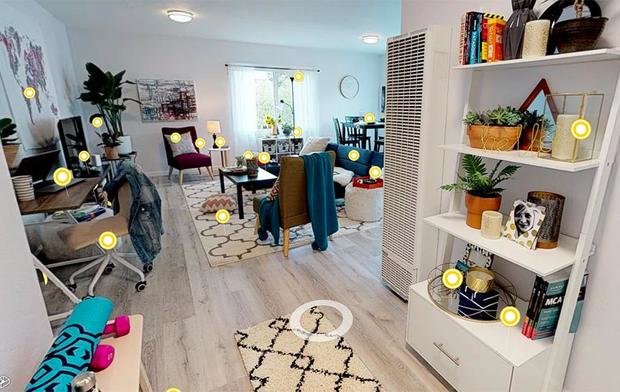Shops of the future: how technologies help sell
Analysis of five key problems officials of chains stores face and possible ways of solving them
Chains stores are traditionally a flagship when introducing new technologies. Retailers use all possible tools to reduce costs and increase income. With the development of new technologies, retailers got a chance to detect patterns in buyers' behaviour, demonstrate their commodity to online shopping fans, effectively manage stocks and so on. Head of the sales department of Softline Group of Companies in Volga Federal Okrug Konstantin Smirnov writes about this in his column in Realnoe Vremya.
New approach to analytics
Ineffectiveness when planning purchases, suboptimal use of warehouses, employee fraud (shadowy transactions and disposal of a commodity) as well as suboptimal location of a commodity on the shelves and performance of checkouts are the five key problems officials of chains stores face. All these problems can be solved with the help of business analytic tools.
For effective performance, a chain store should daily analyse key performance indicators: the number of visitors, the average bill, the popularity of some commodities and so on and compare them with a plan. Business analytic systems can automatically collect all data from a client's systems such as 1C, ERP, PACS, checkout terminals, EXEL files and other sources. After collection, the data will be processed and laid out as a user-friendly graphic.
So everyone who has access will receive analytics about the state in a convenient regime, even in real-time mode. If we want to receive details about an indicator, we just need to click the mouse once. In the end, it takes much less time and effort to prepare a report, analyse it and, as a result, make a management decision. Business analytics helps minimise a possibility of error when planning and forecasting the future activity and, consequently, avoid a problem of a big quantity of stocks and unclaimed workforce.
Retailing often faces a problem of suboptimal distribution of a commodity to sale points – it's solved by Predictive Analytics module, which can collect information about sales of every product in all sale points of the chain, process it automatically by using built-in algorithms and give recommendations for redistributing a commodity.
Finally, analytics helps stimulate demand. For instance, analysing bills for a specific period, one can understand what groups of commodities are more popular, analyse time intervals between purchases of some products, define trends and use this data when laying a commodity out.

''Business analytics helps to minimise a possibility of error when planning and forecasting the future activity and, consequently, avoid a problem of a big quantity of stocks and unclaimed workforce.'' Photo: mirdostupa.ru
To analyse consumer behaviour, one can use artificial intelligence, too. More and more companies understand that not social and demographic indicators but the specifics of behaviour are the most important thing when working with purchasers – what people purchase in this chain and how often, why some commodity attracts them, if their relatives and friends use the chain's services, what other shops they go shopping in.
Carrying out multidimensional segmentation of all purchasers of a shop and dividing them into segments, a company finds it easier to understand how to increase the number of visits and the average bill in a segment, what purchasers of the chain are more valuable and how they can influence them by increasing the frequency of visits and the average bill. All this data can be found by applying possibilities of artificial intelligence.
Routine is past history
Robotisation is also an already spread occurrence in retailing. Robotic checkouts are already introduced by big world companies, projects when people will put a commodity into a shopping basket equipped with a system capable of defining the content and the value. In this case, we don't need a checkout. Robots-assistants working in the shop are appearing. At the moment they lack autonomy and features, but it's a matter of time. Japan already has examples of this kind of shops.
If the introduction of robots isn't widely spread because of a high price, even a small company can afford the technology of Robotic Process Automation (RPA). This technology allows to imitate a person's work in software freeing employees from the necessity to carry out routine tasks (for instance, count the stocks by hand), now it's actively developing in the Russian market.

''More and more companies understand that not social and demographic indicators but the specifics of behaviour are the most important thing when working with purchasers – what people purchase in this chain and how often.'' Photo: iot.ru
Reality alone isn't enough
An interesting tendency is observed in the retail market: offline shops are trying to increase their clientele online, while online shops, on the contrary, are opening bricks-and-mortar points in an attempt to conquer part of the traditional commerce market. In both cases, virtual and augmented reality technologies can serve as a tool of interaction between a brand and a consumer.
So a lot of online shops are opening innovative showrooms to increase the recognisability of their brand and earn the loyalty of purchasers (for instance, because of a wow effect). As the penetration of VR devices for consumers is low at the moment, shops can create small showrooms (room-scale VR) on their territory. A single immersive space is created – for interaction with a brand rather than shopping.
Compared to traditional shops, online shops have such a drawback as the absence of physical interaction with commodities and communication with a seller. It's the main reason for a low attendance conversion rate when selling on a website – 3% (while an offline shop has 30%). VR technologies can quite successfully fill these gaps and turn the Try-Before-You-Buy concept upside down: for instance, to offer an expensive car for a test drive or conduct a virtual tour to a recently built block of flats in Kazan for a potential purchaser from Samara.
The so-called 3D shopping is in its early stage of development now, though big retailers are taking noticeable measures to make it popular. For instance, last summer Walmart launched 3D shopping on the Internet. Clients can ''enter'' a designed flat with things arranged, available for instant purchase in a special section of the retailer's website. When exploring the house, purchasers click on subjects that are interesting for them to get additional information about them.

''The so-called 3D shopping is in its early stage of development now, though big retailers are taking noticeable measures to make it popular.'' Photo: slashgear.com
No magic wand
Despite the obvious advantages of using new technologies, we can't consider them a magic wand that will help make your business more effective within weeks. Indeed, technologies are a key tool that allows a business to change and become successful.
At the moment, the players who learnt how to work with digital technologies or began developing in the new format from the beginning are showing the biggest profit in the market. Nevertheless, there is no single recipe for success. A digital transformation should start with looking for so-called business insights – to find functions and services with the biggest potential for growth in a business model.
The next stage is to formulate a goal (a long-term business challenge): for instance, if you need to increase revenue by 9%, it's important to define the factors affecting this indicator and influence them daily. Meanwhile, the best thing is to look for opportunities involving your own employees and a reliable partner in digital business transformation.